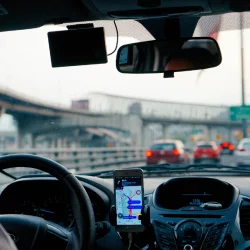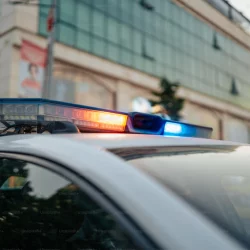How Crosswalk Design Impacts Pedestrian Safety and Legal Outcomes
Crosswalk design plays a crucial role in pedestrian safety by ensuring clear visibility and proper traffic flow. Poorly designed crosswalks increase accident risks, influencing legal outcomes. Lawyers assess design flaws when representing victims, as inadequate infrastructure may contribute to liability, leading to higher compensation and advocating for safer urban planning practices.
Safety for pedestrians is a priority in development nowadays as cities expand and foot traffic rises steadily each day. The design of crosswalks plays a role in this aspect by not only improving pedestrian safety but also impacting the legal aspects of accidents involving vehicles and pedestrians. Speaking to Jason Stone injury lawyers for legal help in this matter can be quite fruitful. This article delves into the influence that crosswalk design has on ensuring safety and its implications on matters related to traffic incidents.
Importance of Crosswalk Design
Pedestrian crosswalks are designated paths that help people cross the street safely and effectively. They also influence how pedestrians and drivers interact with each other on the road.
High visibility plays a role in road safety as it helps drivers stay alert and aware of their surroundings—especially in busy areas where bright markings are essential for catching their attention effectively and preventing accidents from happening regularly.
Safety Measures in Design
Safety is a priority when it comes to designing crosswalks that effectively reduce accidents. Including pedestrian signals is crucial for giving instructions to pedestrians. The signals frequently feature countdown timers that help people estimate how much time they have to cross the street.
Moreover, curb extensions, sometimes called bulb-outs, shorten crossing distances. This design feature increases visibility while reducing pedestrians' time in traffic lanes. Strategically placed median refuges offer a safe space, particularly on wide roads, allowing individuals to pause midway through the crossing.
Influence on Legal Outcomes
The way crosswalks are created can play a role in situations like accidents. Whether safety features are there or not can decide who's at fault. If crosswalks are designed well, they can show that the city is serious about safety, and that may sway decisions.
Unkept or incorrectly marked crosswalks can also cause conflicts, as legal experts scrutinize their compliance with regulations to determine liability for municipalities or other parties involved if regulations are not followed accurately.
The Role of Technology
In today's world of crosswalk design advancements, technology is becoming more crucial than before. With the introduction of crosswalks that are fitted with sensors and linked to traffic signals to adjust to live situations, these setups are capable of recognizing the presence of pedestrians and activating lights to warn drivers.
Certain urban areas are testing out augmented reality to elevate pedestrian crossing encounters. This cutting-edge technology displays signs on the street, assisting pedestrians in safely crossing the road. These advancements enhance safety and offer essential insights for city planners.
Community Involvement in Design
Designers can create crosswalks that cater to needs by taking into account feedback from the community during the planning phase. During this stage of the process, engaging with residents living locally can result in suitable designs. Residents from the community often give input on areas that need focus, like those close to schools or parks.
Forums and surveys open avenues for collecting feedback from the public and community members alike, which in turn helps planners shape designs that mirror the community's traits, leading to safety and user-friendliness.
The Future of Crosswalk Design
Urban areas are constantly changing. As a result, the design of crosswalks needs to keep up with challenges that arise over time. The use of reusable materials is one way to create eco-designs in these urban spaces. Solar-powered lights and recyclable materials are examples of how we can reduce the impact while still ensuring that these crosswalks remain fully functional.
In addition, to that, design requirements should take into account pedestrian requirements for individuals, including those with disabilities, to ensure accessibility for everyone by incorporating raised tactile surfaces and audible signals as crucial elements for inclusivity.
In Summary
Effective crosswalk designs are crucial for pedestrian safety and legal considerations since they involve visibility improvements and safety features based on community input for a rounded strategy. In addition, the use of technology shows progress in creating city environments.As urban areas expand, it becomes vital to focus on crosswalk designs to protect pedestrians and influence legal aspects.
More to Read:
Previous Posts:









